#albert nipon
Explore tagged Tumblr posts
Text
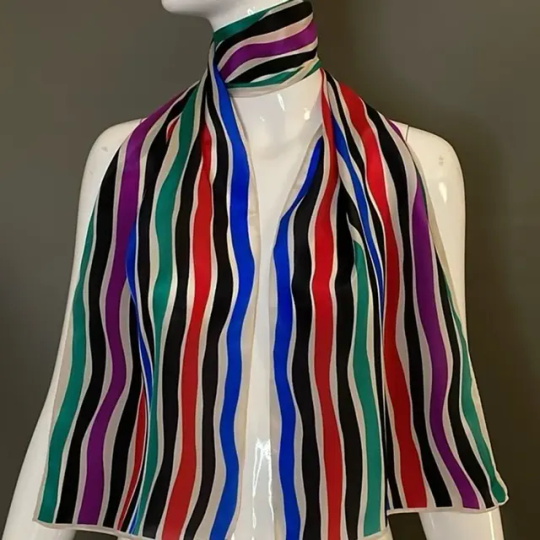
Vintage Albert Nipon Silk Scarf Stripes 11 In by 56 In Excellent Condition ebay ms.topcatstyle
2 notes
·
View notes
Text
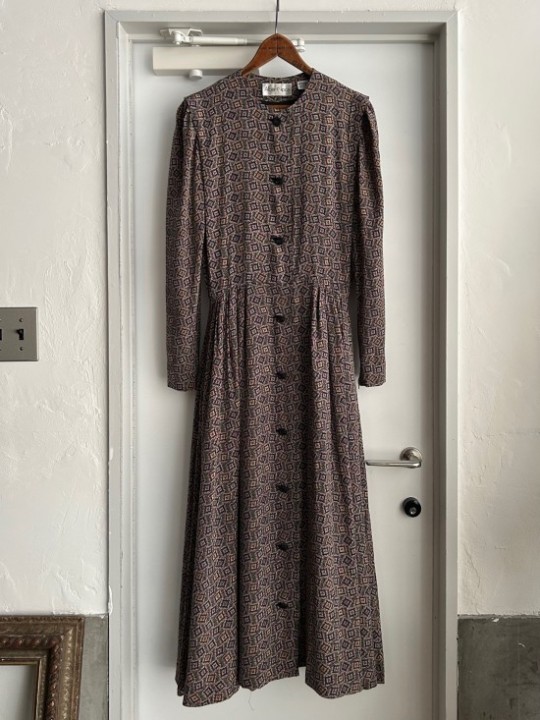
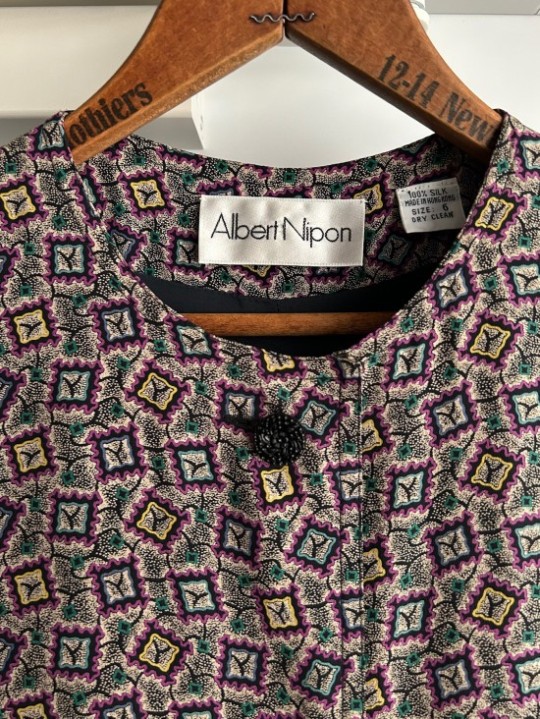
90's Albert Nipon silk long Dress
現代の既製品の服などとは別格。次元が違います。感動すら覚える逸品です。
0 notes
Text
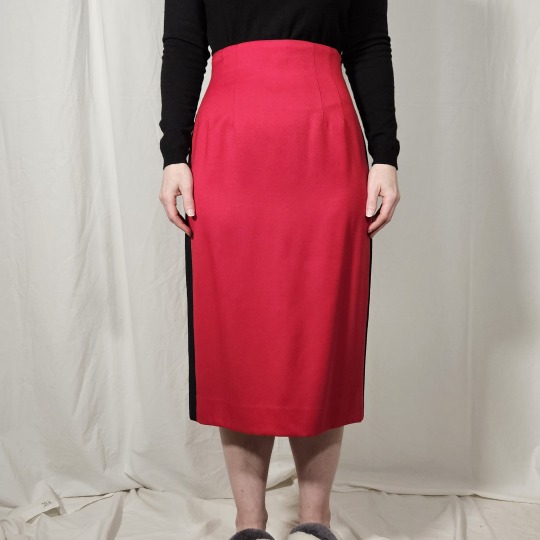



0 notes
Text

Melinda, 23
“I’m wearing a vintage Albert Nipon set and a detachable kilt belt. I mostly wear vintage, secondhand, and handmade items and gravitate towards prints and interesting silhouettes. For me, style serves as a wearable catalogue of who I am and where I’ve been over time; I like putting on clothes and remembering where I found them or why I chose them in the first place.”
Sep 11, 2023 ∙ Soho
527 notes
·
View notes
Text
LA CAZA DE BRUJAS V: PELICULAS PROSOVIETICAS
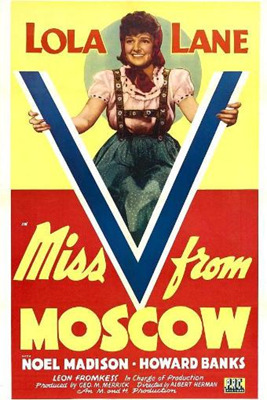



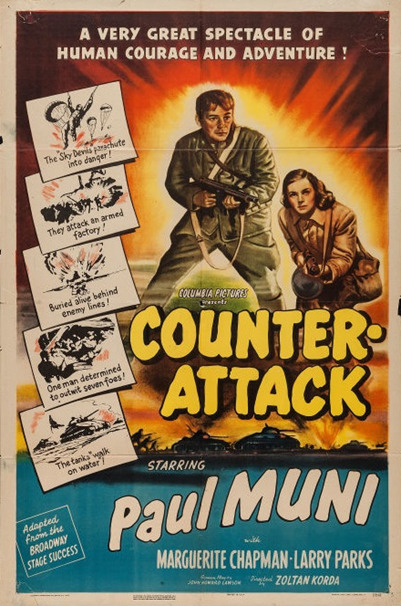
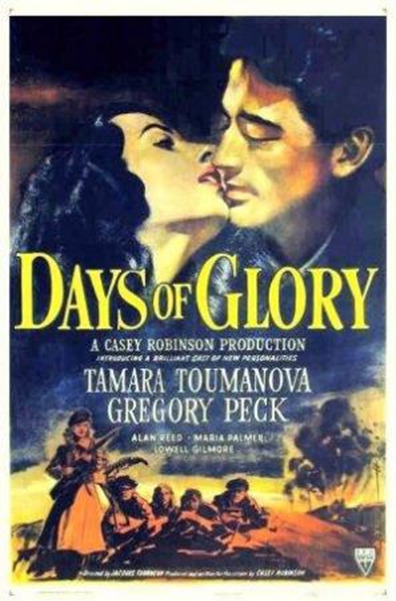

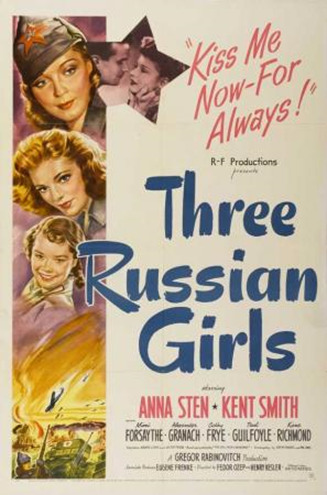
La sociedad norteamericana en los inicios de la II Guerra Mundial era profunda y mayoritariamente aislacionista y no quería que Estados Unidos se involucrase en el conflicto. Esa era la promesa política del presidente Roosevelt. Con el ataque japonés a Pearl Harbor el 7 de Diciembre de 1941, Estados Unidos entró en la guerra. Roosevelt necesitaba que la opinión pública se inclinase rápidamente hacia la intervención militar y pronto comenzaron a filmarse películas antinazis y antijaponesas, así como documentales que exaltaban las victorias norteamericanas y minimizaban las iniciales derrotas ante los nipones en el Pacifico. Se realizaron decenas de películas de todos los géneros que defendían la intervención militar. Hasta Tarzán y Batman aparecieron implicados en la lucha contra alemanes y japoneses.
Pero había un problema: Estado Unidos se había convertido en aliado del enemigo del capitalismo, la Unión Soviética, y las películas anticomunistas de unos años antes con Ninotchka a la cabeza había que sustituirlas por otras que enfatizasen la alianza ruso-americana y la lucha del pueblo y de los dirigentes de la Unión Soviética. Así se los hizo llegar Roosevelt a los grandes estudios y de estos en pocos años, hasta el final de la guerra, salieron unos productos, 8 en total, que históricamente se han convertido en curiosidades pero que, en su día tras el fin de la guerra, le dieron enormes problemas a todos los que habían intervenido en esas películas. La mayor parte de los guionistas, algunos directores y actores de estas películas tuvieron que sufrir las represalias que se pusieron en marcha tras el final de la guerra y que culminaron histéricamente en la Caza de Brujas.
Dos curiosidades sobre estas películas: la primera es que en sus guiones otorgan a los papeles femeninos una inusual importancia en películas de tipo bélico. Era la traslación a la necesidad de incorporar las mujeres al esfuerzo de guerra de toda la nación. La segunda curiosidad es que ya os podéis imaginar que estas películas jamás fueron estrenadas en España y solo algunas de ellas se han podido ver después de 1975 editadas en DVD.
Examinemos brevemente cuales fueron estas películas:
MISS V FROM MOSCOW (1942): dirigida por Albert Herman. Una rusa y un norteamericano en el París ocupado trabajan para la resistencia francesa. No la conozco y según los críticos es bastante artesanal y endeble.
MISIÓN EN MOSCÚ (1943): pura y curiosa propaganda prosovietica. Dirigida por Michael Curtiz, con la intepretación de Walter Huston y con un guion de Howard Koch -quien posteriormente fue puesto en la lista negra y tuvo que exiliarse en el Reino Unido – es un conjunto de alabanza a todo el sitema político soviético, incluidas las purgas al trotkismo (caracterizado como una quinta columna al servicio de Hitler) y al mismo Stalin. El propio embajador estadounidense en Moscú, Joseph Davies, aparece en los primeros planos dando fe de la bonanza del regimen ruso a todos los niveles. Pero si es curioso que el propio embajador avale la película lo es más que fuese producida por la Warner cuyo propietario cuando finalizó la guerra se convirtió en uno de los más encarnizados perseguidores de izquierdistas o simplemente liberales en Hollywood.
EL CHICO DE ESTALINGRADO (1943): dirigida por Sidney Sankow y Tay Garnett (el mismo de la gran versión de El cartero siempre llama dos veces, de 1946) es una película puramente bélica que sirve para ensalzar la lucha de los ciudadanos rusos, en este caso unos niños, frente al avance de los alemanes hacia Estalingrado.
LA ESTRELLA DEL NORTE (1943): dirigida por Lewis Milestone (Sin novedad en el frente) y con un elenco de actores de primera línea con Dana Andrews, Walter Huston Walter Brenan y Erich Von Stroheim; fue la respuesta que la MGM dio al presidente Roosevelt cuando este les comunicó a las grandes productoras que “América necesita un filme de nuestros aliados rusos. Debe ser un retrato bien estructurado que motive el suministro de apoyo al gobierno en su alianza con la Unión soviética”.
Es la película más conocida de toda esta serie. Es de buena factura y es de una candidez increíble con algunas secuencias que rayan en la ñoñería: granjeros rusos que viven en un país idílico, cantando La Internacional y completamente ajenos a la invasión nazi que se les venía encima.
En 1957 “rehicieron” la película: cambiaron el montaje y sobre todo los diálogos. Los hechos no ocurrían en Rusia sino en Hungría; una voz en off alertaba del peligro comunista y para perder la conexión con el original le cambiaron hasta el título por Armored Attack (afortunadamente hace pocos años se ha podido ver en su integridad original).
Como era de esperar la guionista Lillian Helman fue puesta en la lista negra y el director tuvo que huir a Europa para continuar su carrera.
SONG OF RUSSIA (1944): dirigida por Gregory Ratoff y Laslo Benedek es posiblemente la más conocida de esta serie junto a La estrella del Norte. Tuvo como actor estelar a Robert Taylor que luego para disculparse de esta aparición prosovietica declaró voluntariamente ante el HUAC denunciando a muchos compañeros. La película es la clásica historia de amor: poco antes del inicio de la guerra un director de orquesta norteamericano de gira por la Unión Soviética se enamora de una chica rusa. Luego en la guerra, ambos, símbolo de la unión de la US y de USA, lucharan frente a los alemanes.
THE RUSSIAN GIRLS (1943): dirigida por Henry S. Kesler y Fyodor Otsep narra las aventuras amorosas, en plena invasión nazi de la Unión Soviética, entre un piloto de aviación norteamericano herido y una voluntaria rusa de la Cruz Roja.
CONTRAATAQUE (1945): dirigida por Zoltan Korda y con Paul Muni entre sus actores. Adaptación de una obra de teatro que exaltaba el heroísmo de los soldados rusos ante los alemanes; el director de origen húngaro logra una buena película de género bélico.
Principio del formulario
DIAS DE GLORIA (1944): dirigida por Jacques Tourneur (La mujer pantera) y con la intervención de Gregory Peck. Tourneur dirige con eficacia la exaltación de los guerrilleros rusos ante los nazis, aunque sin grandes calidades artísticas y destacando las múltiples alabanzas a los soviéticos. A destacar que fue la primera película en la que Gregory Peck fue el actor principal.
13/7/2024
5 notes
·
View notes
Text
Albert Nipon 1983
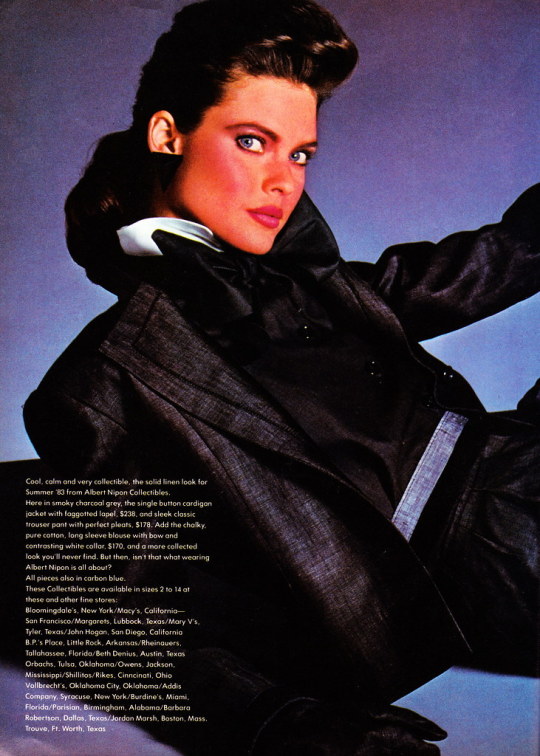
Carol Alt
3 notes
·
View notes
Text
i want to sew agaiiiinnnn i bought 3 meters of a navy cotton wool blend 2 months ago to finally make my vintage albert nipon for vogue pattern...
2 notes
·
View notes
Text
The dc pacts tracksede of trockie north dekoda agreement. Of th white American negro. Of thunder in our hearts. Baby of the rights to adam snwoflake. To go unheard of. Until Microsoft Amazon odete and swan city known as Apple apple and Facebook groups. Of the places of the superhero pitch. Depicting superman. Of Vietnamese the new token moment to you now. And tilaitna were back of hsinapia and bandits with neet and very touchbel of Japan and some nipon of samurai walks of rice farm living. Of penny Parker the permission slip.
By Rio remerez and adam snowflake of school shooter mentality to depict nazis the marginalized red skull of DC comics. By owned and operated in all time peirods of employed till business calls and Langston odete meetings of vampire blood bags marked coca cola alowed as fucked in the head Charmaine candy. Of literal to agmberwinkle. Of needing a drink on break. Of doing here or hermes or stoner or herem not the Islamic concept on staff building by blood Ben's and about that. Tiny garbage trays of give hope for period pads labeled to really dispose of it. By night drawer life. Such as blackskwtch till soul medalion time na place of much needed racism. And not a much needed racism. Called a run for feet policy of new year neverland. And see more Lewis trueblood updated outside time peiord. Inside my lungs kept at braincake comics forever. And some civil war eras of copper coin but it's update of feeding on enegery and blood burst vending machine in spirit world top floor sudnely by layer of wonderland for copper and coin. Comics of new year neverland. Of oh ho ho accents. Of follow me sure mens. Of Albert sikora young forever in the afterlife moved counted as alive by many and all that knew him to see adam again for cults. Alone. Or events like parties comodrbid with the afterlife. Of mark hamiltons area of regarded. Fallout new Vegas rigsrdee of area, the afterlife route oc canton Georgia. As to why meulin is white ayrina to everyone. But not the second of leave by insane salym afterlife. Of which many DC comics live out time and jeopardy. Of underdogs. Cubeericks. Spielberg. And adam as those names. Including adsm speilberg who herby signs this. Lost souls verse. Adn running free. Two kids you and me.
_______/_____///////^____________[___]________/______/______/_____.



0 notes
Text

January 9, 1982 - Buffalo Evening News Fashion Inspiration From 1700s By CATHERINE SMITH NEW YORK -- No woman today deliberately setBlass, Albert Capraro, Oscar de la Renta, Gene Ewing, Mary McFadden, Morton Myles, Albert Nipon, Mollie Parnis, Arnold Scaasi and Helen Sideles of the 1700s are on display now in another glittering presentation by Diana Vreeland at the The Metropolitan Museum of Art, New York's Costume Institute in New York City. Women of that time are especially remembered for "sacque dresses," tightly fitted and decollete on top and voluminous through the skirt. Sometimes a train fell from the back neckline of the dress over the pouffed skirt for even more volume. To make the skirts stand out, side paniers came into fashion. These embroidered or decorated skirt panels, were made to stand out by underconstruction of wood or whalebone tied at the waist. Louise Esterhazy has written in Women's Wear Daily that she 's been "18th-centuryed half to death" but most people seem to be enjoying Diana Vreeland's show. Mrs. Vreeland, a longtime editor of Vogue, is an admirer of that time because she says women then emerged from "domestic bondage" to take their places in cities and become "powers behind the throne" as well as leaders of their own intellectual salons. Fashions from France dominate the show but there are also clothes from Sweden, England, Italy, and America, as well as accessories, including a reproduction of the so-called "Queen's Necklace," with 637 diamonds, which is supposed to have hastened the French revolution. The 18th century clothes even have some modern descendants, the Cameo Collection. Merle Norman cosmetics, sponsor for the costume institute show, also commissioned 10 of today's leading designers to do clothes inspired by the 18th century garments. The Cameo Collection includes work by Bill Blass, Albert Capraro, Oscar de la Renta, Gene Ewing, Mary McFadden, Morton Myles, Albert Nipon, Mollie Parnis, Arnold Scaasi and Helen Sidel. Most of their designs are done in opulent fabrics: satin, taffeta, velvet, brocade, lace. There are many of the to-be-expected full skirts, tight bodices and flowing sleeves. Mary McFadden's design even includes her version of side paniers to make the skirt stand out. A book entitled "The Eighteenth Century Woman," is slated to be published in April, 1962, by Doubleday. The text was written by historian Olivier Bernier, and it was edited by Jacqueline Kennedy Onassis. DRAMA AND OPULENCE of the 18th century captured by designer Albert Capraro in his "blush rose" silk taffeta gown with full, full skirt and deep v-neck. Part of the Cameo Collection.
0 notes
Link
Check out this listing I just added to my Poshmark closet: Albert Nipon Tie Silk Black Tan Burgundy Vintage.
0 notes
Link
Check out this listing I just added to my Poshmark closet: Albert Nipon dress & coat sz 12 euc mother of bride ivory.
0 notes
Text

ALBERT NIPON Music Theme Silk Scarf 35 Square Vintage ScarvesiLove 910s84 ebay ScarvesiLove
20 notes
·
View notes
Link
Check out this listing I just added to my Poshmark closet: Albert Nipon | Vintage 100% Silk Button Front Blazer Jacket Blue Size 6.
0 notes
Link
Check out this listing I just added to my Poshmark closet: Vintage 80's Albert Nipon Coat Wool Princess Overcoat Velvet Hooded Long Gray 2.
0 notes
Link
Check out this listing I just added to my Poshmark closet: ALBERT NIPON For APROPOS Sz 6 Black Paisley Crepe Puff Sleeve Vtg Pleated Dress.
0 notes

